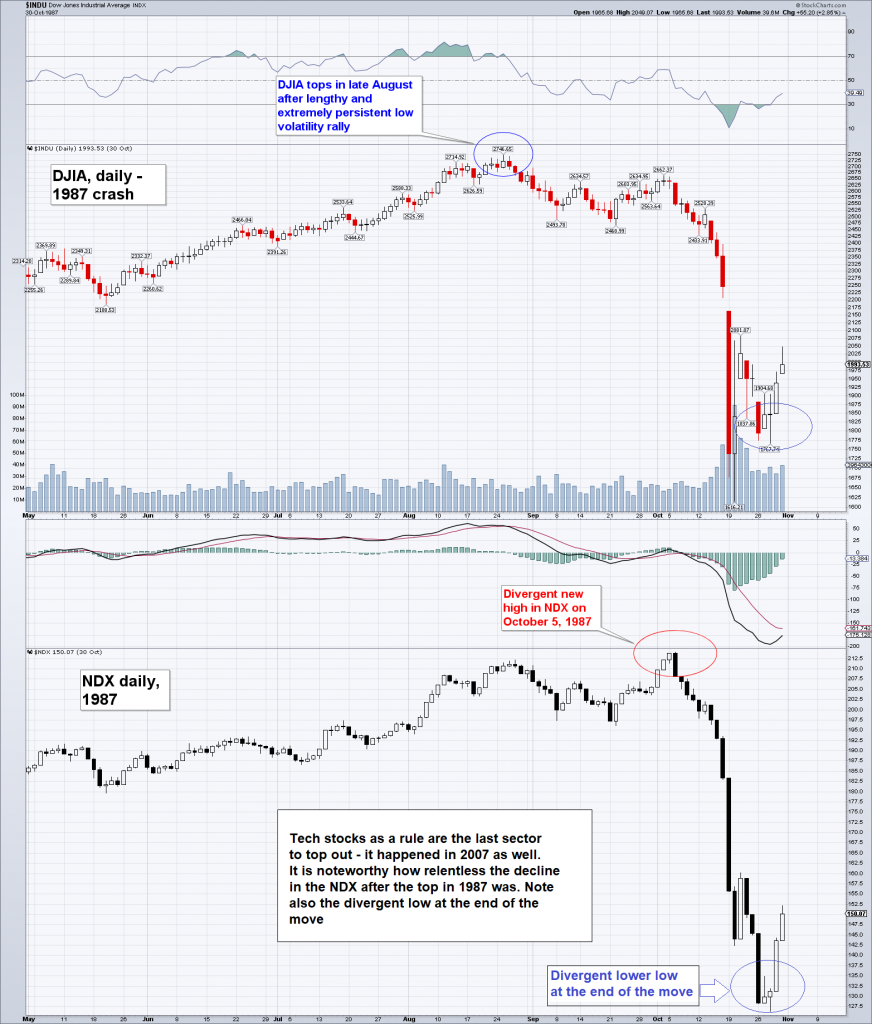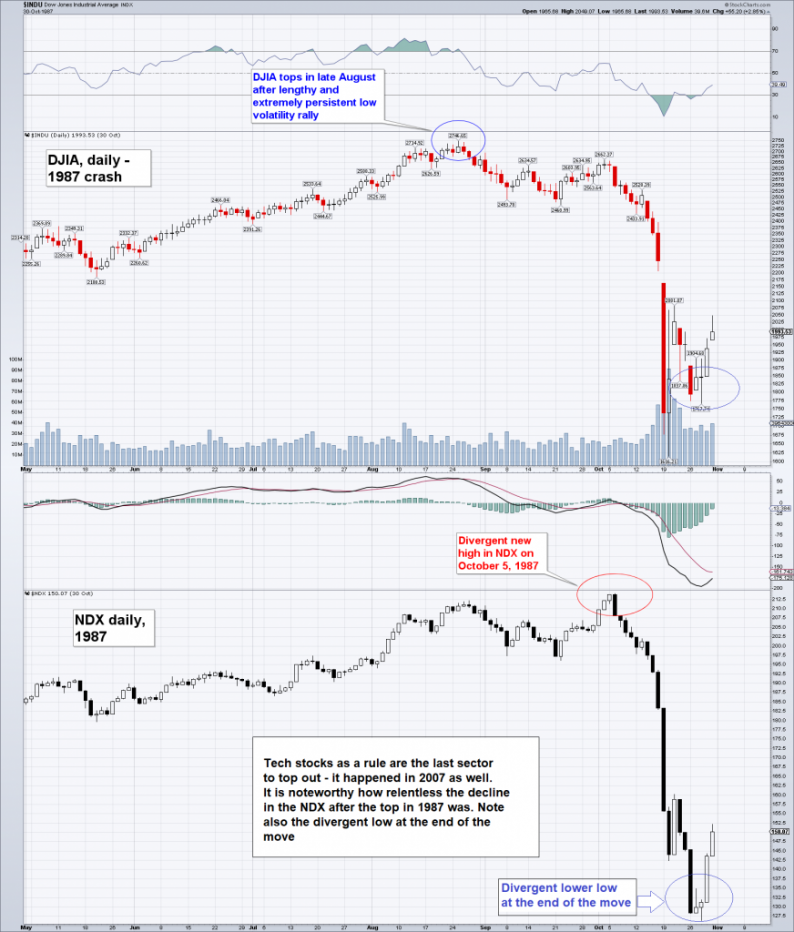A Word on 1987 Analogies – Why Even Bother?
As our friend Dimitri Speck noted in his recent update, the chart pattern of the SPX continues to follow famous crash antecedents quite closely, but obviously not precisely. In particular, the decisive trendline break was rejected for the moment. If the market were to follow the 1987 analog with precision, it would already have crashed this week. Nevertheless, we wanted to show one more parallel in connection with the previously discussed “flight to fantasy” effect. As we mentioned when we posted this chart, the divergent DJIA/NDX peaks we could recently observe happened in 1987 as well. Here is a chart of the event:

Divergent highs and lows in the NDX compared to the DJIA in 1987. The similarity with the recent divergence at the peak – which took even almost the same time to develop (DJIA peak on Jan 26 vs. NDX on March 12) – is quite glaring. It is one of several reasons why we believe the January top in the major benchmark indexes may turn out to be a significant one, regardless of whether an 87-style crash wave develops.
Why even bother with such comparisons? Although crashes are exceedingly rare events, 1987, in particular, is quite interesting to us. For one thing, because the decline happened despite the fact that no recession was in sight and for another because of what did happen ahead of the crash:
- money supply growth decreased rapidly
- the Fed had embarked on a tightening spree
- CPI inflation, which stood at a mere 1.4% in early 1987 unexpectedly started to rise strongly
- the dollar was weak throughout the year despite monetary tightening by the Fed
- new computerized trading techniques invaded the market, in the form of program trading (arbitrage between stock index futures and the cash market) and “portfolio insurance” (a hedging program involving S&P futures – the method was akin to delta-hedging of options).
- market multiples were extremely rich, particularly in comparison to recent market history and relative to treasury bond yields.
- market internals began to look a bit iffy in several respects.
All of these characteristics apply to today’s market as well – including the fact that economic indicators are not warning of an imminent recession just yet (it should be noted though that coincident indicators suggest that economic growth is weakening as Mish points out here. We remarked on the odd decline in the Fed’s US leading index back in early November already, when we pondered the odd behavior of credit spreads (more on the latter topic in the next post).













Leave A Comment